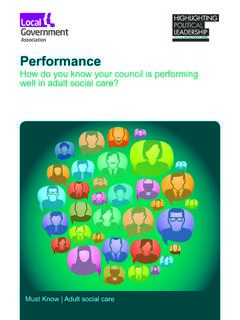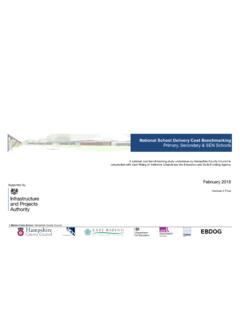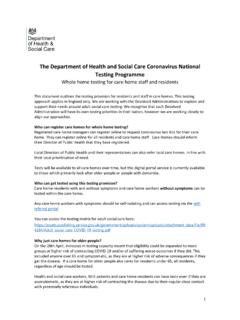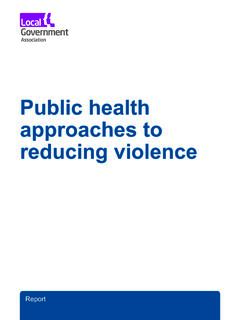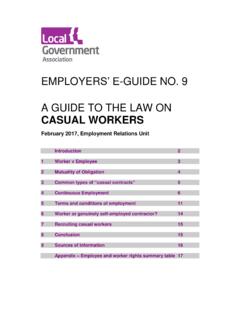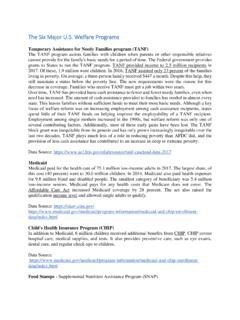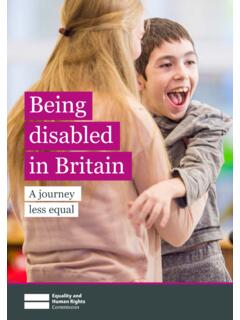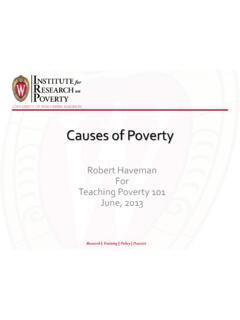Transcription of The local impacts of welfare reform
1 1 In January 2016, NIACE and the Centre for Economic and Social Inclusion merged to form the Learning and Work Institute Learning and Work Institute Patron: HRH The Princess Royal | Chief Executive: Stephen Evans A company limited by guarantee, registered in England and Wales Registration No. 2603322 Registered Charity No. 1002775 Registered office: 21 De Montfort Street, Leicester, LE1 7GE The local impacts of welfare reform A review of the impacts of welfare changes on people , communities and services October 2017 Tony Wilson Sarah Foster 2 CONTENTS Executive summary .. 3 1. Introduction .. 10 Defining welfare reform .. 10 The impacts of welfare reforms.
2 15 This report .. 16 2. impacts on places .. 18 Summary .. 18 impacts on places .. 19 Impact on communities .. 23 3. The impacts on households and individuals .. 25 Summary .. 25 impacts on particular groups .. 26 impacts by ability to respond .. 28 How reforms are felt .. 30 4. Responding to welfare reform households and individuals .. 36 Summary .. 36 Housing responses .. 37 Employment responses .. 42 Accessing support .. 45 5. Responding to reforms places .. 47 Summary .. 47 Council responses .. 47 Voluntary, community and wider public sector responses .. 54 6. Conclusions .. 57 Key findings .. 57 References .. 62 3 EXECUTIVE SUMMARY The government s welfare reform agenda is intended to reduce benefit dependency for households, and to make the system more affordable for government.
3 The reforms are therefore predicated on those affected being able to respond positively to reforms by increasing their income through work; and/ or by reducing their outgoings, in particular through housing choices. For those less able to respond, the government s reforms are intended to provide a safety net that protects the poorest. This report seeks to understand whether the reforms are delivering their intended outcomes reducing dependency, while protecting the poorest. It sets out the evidence on the impacts of welfare reform on households, individuals, communities and services across England; and to understand how those affected are responding to reforms. A separate report has also been published by Policy in Practice which presents new, detailed analysis of the financial impacts of welfare changes introduced since 2010 (Policy in Practice, 2017).
4 impacts ON PLACES The impacts of welfare reform have varied between places. While all areas have been impacted by welfare changes, impacts in the northern half of the country have been particularly driven by low incomes and weaker labour markets with more households reliant on benefits and so seeing their incomes reduced; while in the southern half impacts are particularly driven by high housing costs for those on benefits leading to significant reductions for those claiming Housing Benefit. In addition, three types of area have been hardest hit: 1. Older industrial areas particularly in the North East and North West, Birmingham and the Black Country where there is high worklessness, low wages and generally weak labour markets; 2.
5 Less prosperous seaside towns for example Blackpool, Torbay, and Great Yarmouth, again where there is high worklessness and low wages, along with often higher proportions of private renters; and 3. Inner London boroughs where rents are exceptionally high and in many places there is also very high worklessness and large numbers of low income households. We find a weak positive correlation between local employment rates and Housing Benefit costs suggesting that benefit reductions are larger in areas with stronger labour markets that provide more opportunities to mitigate those impacts . However, at the same time more than half of local areas with the largest numbers of households affected by the benefit cap have employment rates below 70% - 4 meaning many households with large losses live in areas with weaker employment prospects.
6 impacts ON HOUSEHOLDS AND INDIVIDUALS Certain groups are disproportionately affected by welfare reforms in particular, disabled people and those with health conditions; households with dependent children, particularly lone parents and those with large families; those with the highest rental costs; and many disadvantaged young people . This is in part a consequence of greater cumulative financial losses, but also because some structural barriers disproportionately affect some groups more than others constraining the ability to respond to the reforms in positive ways. However, the extent to which large cash losses lead to crises in households appear to be influenced both by their resilience and by their access to support to mitigate impacts .
7 Key factors making it harder for households to respond positively include: lacking supportive social networks; language barriers; pre-existing debt; caring responsibilities; or health barriers including poor mental health or drug/ alcohol dependency. Often, specific events can push people into crisis like family changes, job loss or unexpected bills. In other cases, an accumulation of small impacts can, over time, lead to crisis. Reforms are being felt in a number of ways. There is extensive evidence of households going without cutting back on essentials including food, heating and clothing as well as cutting back on what might be considered non-essentials like socialising, leisure and family activities.
8 A number of studies find growing arrears often in rents, water and other utilities in turn leading to indebtedness. This further undermines households abilities to deal with emergencies. These cutbacks appear to be leading to negative impacts on wellbeing, causing stress and anxiety and in some cases contributing to or exacerbating ill health (and in particular, mental health). Behavioural research also suggests that these negative impacts may in turn undermine households ability to respond positively, by reducing their sense of agency and resilience. Among family and communities, there is evidence that welfare reforms have put increased strain on relationships. Parents have often tried to shield children from negative impacts , but this can further increase the pressure on parents and some research nonetheless finds increased stress and anxiety among children particularly relating to housing.
9 On the other hand, there is some evidence of communities coming together to help to provide peer support for community and extended family members enduringhardship. Finally, welfare reform is happening in a wider context of rising costs and lower incomes, leading to an affordability gap for low income households that may be 5 interacting with and exacerbating the impacts of reform . This is seen for example in homelessness acceptances, which have increased markedly in recent years. RESPONDING TO reform HOUSEHOLDS AND INDIVIDUALS The evidence on both housing and employment responses is mixed, and is complicated in particular by a range of other factors influencing households circumstances and outcomes.
10 On housing, reforms appear to have led to only modest changes in housing choices over most of the last seven years. However, there is some evidence of changes in more recent years. In particular since the local Housing Allowance was frozen in 2011, LHA caseloads have risen overall but have fallen sharply in central London. It appears that this may reflect migration from Inner to Outer London, with double the rate of increase in HB claimants in the suburbs compared to the rest of the country. Changes are starker when looking at employment with the number of working households in the private rented sector and claiming LHA in Outer London doubling since the start of reforms; while the number of LHA claimants out of work has fallen across London and by more than 40% in Inner London.
